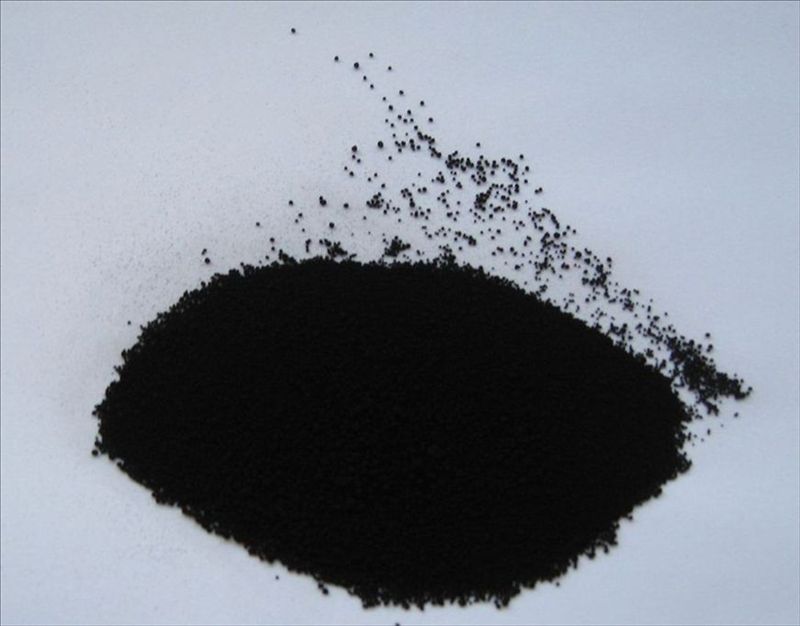A black powdery substance formed by the incomplete combustion or pyrolysis of hydrocarbons in the gas phase under strictly controlled process conditions. Its composition is mainly elemental carbon and contains a small amount of oxygen, hydrogen, and sulfur. Carbon black particles are nearly spherical, between 10 and 500μm. Many particles are fused or agglomerated into three-dimensional bonded dendritic or fibrous aggregates. In rubber processing, it is added to rubber as a reinforcing agent and filler through mixing. Carbon black is one of the oldest industrial products.

Physical and chemical properties of carbon black
The differences between the various carbon blacks are mainly in surface area (or particle size), aggregate morphology, mass distribution of particles and aggregates, and chemical composition.
Surface Area
One of the important properties used to identify and classify named carbon blacks. The surface area is measured by gas or liquid phase adsorption. The most classical method of determination is the low-temperature nitrogen adsorption method (i.e., BET method). Since nitrogen molecules are relatively small and can enter the micropores of carbon black, the results measured by this method characterize the total surface area of carbon black. In recent years, the research success of macromolecule adsorption method (such as CTAB), because macromolecules can not enter the microporous, the results characterize the external surface area of carbon black, the “smooth” surface area. Most rubber carbon blacks are non-porous, so the results of BET and CTAB are consistent. For some pigmented carbon blacks, the difference between the two surface area measurements characterizes the roughness or porosity of the carbon black. Another measurement method – the iodine absorption method- is also widely used in production control and product classification, characterized by simplicity and speed. Still, the results are affected by the degree of oxidation on the surface of carbon black.
Structure
The second important property of carbon black. The structure of carbon black depends on the size and shape of the aggregates, as well as the number of particles and average mass of each aggregate. All these properties affect the aggregates’ stacking state and the powder’s void volume. Usually, the structure of carbon black is expressed in terms of DBP (dibutyl phthalate) oil absorption value. The DBP value of carbon black after compression under 170MPa four times is customarily called the compression oil absorption value or 24M4DBP value. The compression oil absorption value truly reflects the state of carbon black aggregates in the rubber.
Carbon black industrial applications
It is mainly used as a reinforcing agent and filler for rubber, and its consumption is about half that of rubber. Carbon black for rubber accounts for 94% of the total carbon black, of which about 60% is used in tire manufacturing. It is also used as a coloring agent for inks, paints, and plastics and as a UV shielding agent for plastic products. It is also an important additive in many other products, such as electrodes, dry cells, resistors, explosives, cosmetics, and polishing creams.
Carbon black is mainly used in rubber products. The finer the particle size of carbon black, the more superior its reinforcing properties; the higher the structural degree of carbon black, the higher its constant tensile stress and modulus. Fine particle-size reinforcing varieties are mainly used in the tire tread, giving tires excellent wear resistance. For other parts of the tire, such as sidewalls, cord ply, belt cushioning layer, and inner liner, the rubber is required to resist flex-cracking, ozone oxidation, good resilience, and low thermal properties, generally use a thicker particle size of the semi-compensatory type (specific surface area of less than 40m2/g) furnace black.
Pigment with groove black is widely used in inks, coatings, and plastics. Ink, especially news ink, is mainly used in the pigment slot black. In paint manufacturing, high pigment slot blacks give the blackness and gloss of high-grade automotive finishes, while medium pigment slot blacks are used in general industrial coatings. In addition, medium-pigmented channel blacks are also commonly used as ultraviolet light shielding agents for polyolefins and are used to improve the weather resistance of plastic products. Rubber groove black is mainly used in tires, especially the tread rubber of off-road and engineering tires, which gives the tread high strength and good wear resistance.
Hot crack black is mainly used for rubber products. Because of the coarse particle size and poor reinforcing performance, it is only used for the maximum filler incremental occasions, such as in manufacturing rubber mats, hoses, sponge products, seals, tire liners, bead rubber, insulation products, and so on.
